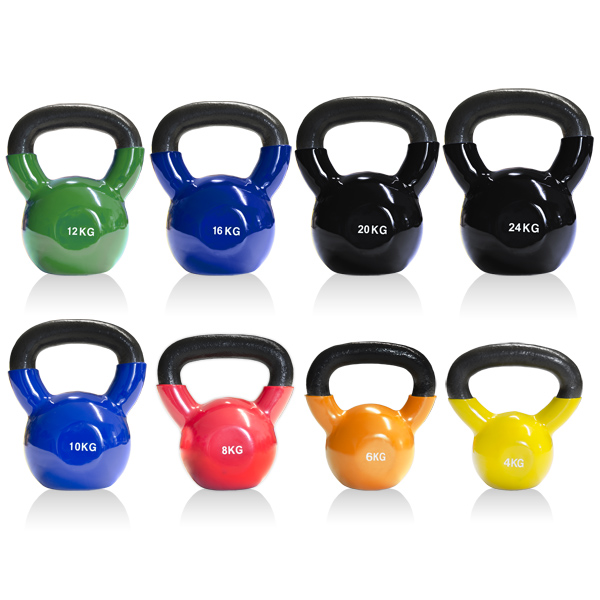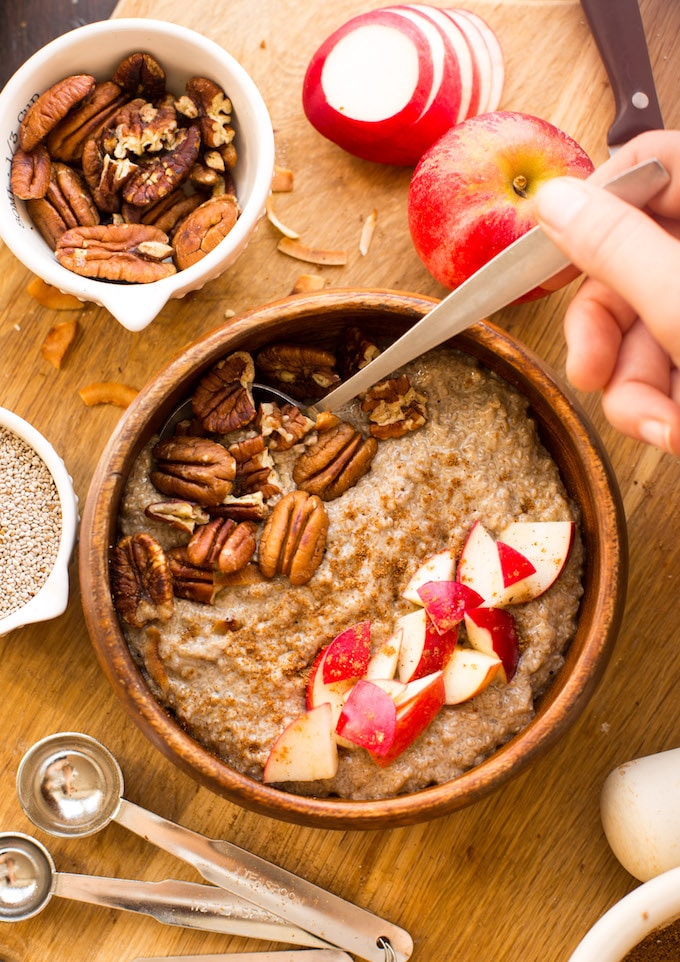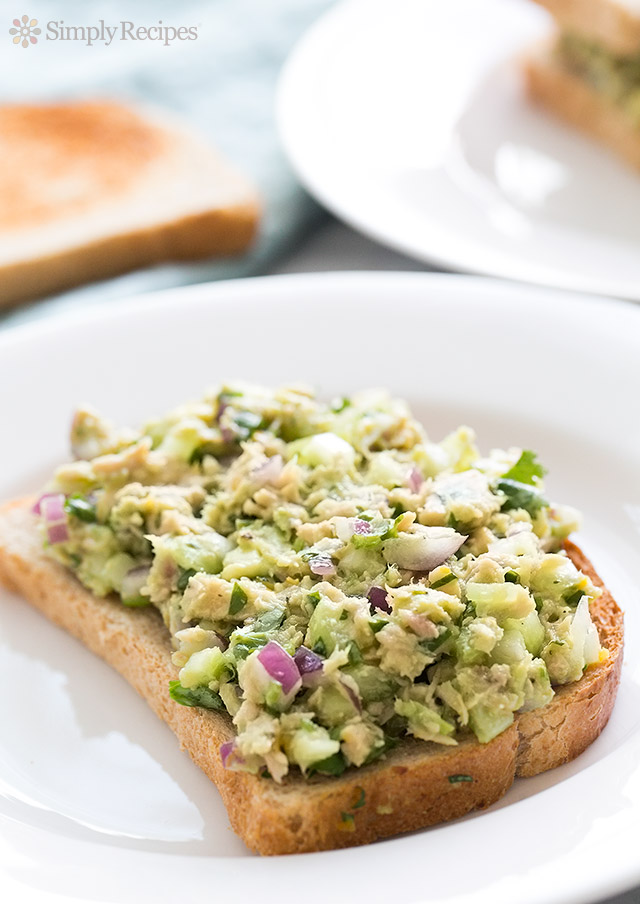- The reason for the surge in kettle bell training is that it gets back to basic training that requires functional, whole body fitness, a great way to get a whole body workout in a relatively short period of time.
- More coordination. Since the brain knows movements and not muscles, you become more coordinated with KB use. KB exercises train your body to work as a unit, This is also why athletes look different to body builders.
- It is the solution for busy people. They want the biggest bang for the buck. KBs can be the solution to trying to squeeze cardio, strength AND flexibility training in an already overbooked schedule. Because of the intensive nature, the workout duration must be kept short. Best of all, they are so small and portable training can take place even in your bedroom.
- Very different from dumbbells and barbells. Anyone who has picked up a kettle bell has felt the difference. The off centred weight of a KB recruits more stabiliser muscles and works the targeted muscles through a wider range of motion. It’s because of the off- centre design of the KB. Isolation exercises such as those done with dumbbells and barbells do not hit those stabilising muscles to the same degree.
- Strengthens every muscle from head to toe. Kettle bell training consists of whole-body movement exercises. It’s well- known that compound, whole body movements typical of kettle bell exercises are superior to machines that isolate muscles for improving muscle tone, body composition, and strength. Further, kettle bells strengthen the tendons and ligaments, making the joints tougher and less susceptible to injury.
- It’s enjoyable. Let’s face it, most exercise is boring. Kettle bell training is quick and enjoyable, which is one of the reasons you’ll stick with it.
- Build a lean, muscular physique. Men see that coveted wedge shape emerge as the training creates broad shoulders, defines abdominals, builds up their arms and pares down their waists. It’s a lean look, more like Bruce Lee than Arnold.
- Easy to learn. Movements are simple and you can start using them right away. No matter how old or how out of shape you are, everyone can do it and should be doing it.
- It’s cardio without killing your joints. The ballistic, but non-impact nature of KB work is the key. Instead, KB exercises actually strengthen your joints.
- Increase mental focus. You can’t just pick it up and mindlessly muscle it up and throw it around. It’s the thinking person’s workout. At each moment the lifter must be focused on the movement. The result is improved coordination and mental focus.
High Intensity Skipping Drill
After a quick high intensity workout that will get your heart rate pumping and endorphins running through the roof!? All you need is 15- 20 minutes of your day (depending on your fitness levels) and a skipping rope.
This drop set workout will work your entire body and will leave you feeling like a sweaty mess! Remember if something does not feel right, listen to your body and stop.
300 Skips / 30 Squat Jumps / 1 minute Plank hold
200 Skips / 20 Squat Jumps / 45 second Plank hold
Mediterranean Tuna Antipasto Salad
This salad recipe is a great lunch time option and is diabetic appropriate, gluten- free, healthy ageing, healthy immunity, heart healthy and high fibre. 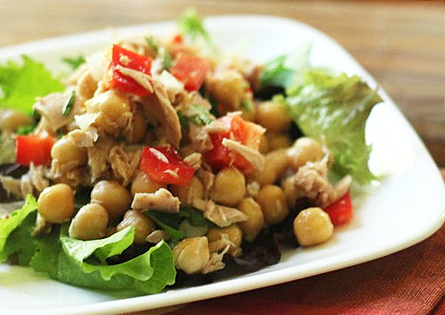
INGREDIENTS
- 1 15- to 19-ounce can beans, such as chickpeas, black-eyed peas or kidney beans, rinsed
- 2 5- to 6-ounce cans water-packed chunk light tuna, drained and flaked (see Note)
- 1 large red bell pepper, finely diced
- ½ cup finely chopped red onion
- ½ cup chopped fresh parsley, divided
- 4 teaspoons capers, rinsed
METHOD
- Combine beans, tuna, bell pepper, onion, parsley, capers, rosemary, ¼ cup lemon juice and 2 tablespoons oil in a medium bowl. Season with pepper.
- Combine the remaining ¼ cup lemon juice, 2 tablespoons oil and salt in a large bowl. Add salad greens; toss to coat.
- Divide the greens among 4 plates. Top each with the tuna salad.
- Note: Chunk light tuna, which comes from the smaller skipjack or yellowfin, has less mercury than canned white albacore tuna. The FDA/EPA advises that women who are or might become pregnant, nursing mothers and young children consume no more than 6 ounces of albacore a week; up to 12 ounces of canned light tuna is considered safe.
Best Methods For Muscle Recovery
Recovery doesn’t mean chilling in front of the TV or indulging in unhealthy food until you’re sick. What you do on off- days is just as crucial as what you do in the gym. Have a read and see how you can break the couch potato habit. Add New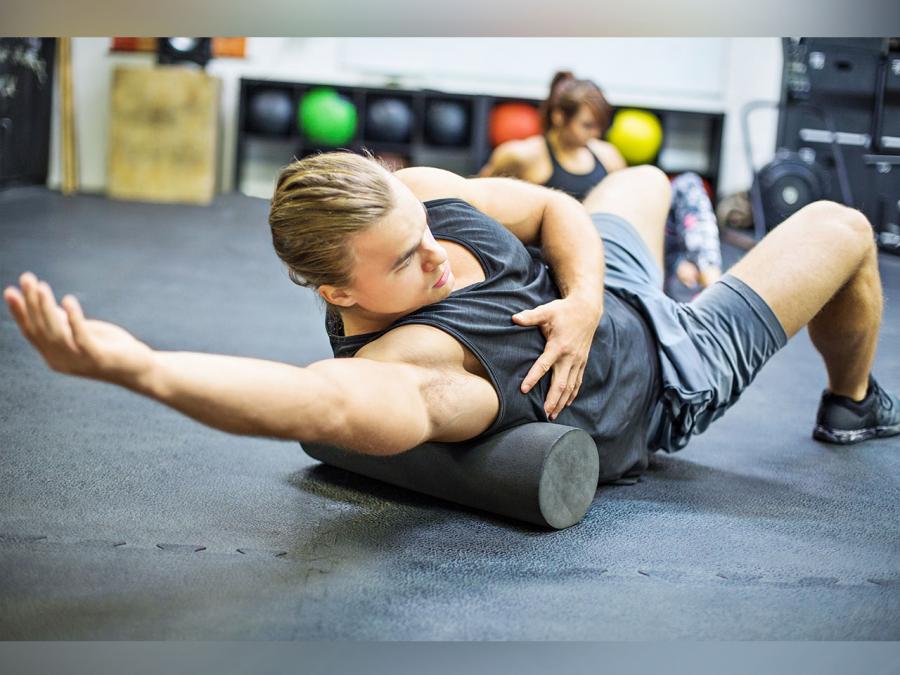
- Promote Circulation By Working Your Joints. Even on your off day, by moving your arms, wrists and knees in low intensity circles. The opening and closing of your joint brings fresh synovial fluids to nourish, lubricate and hydrate these areas, while expelling waste and scar tissue. Rotate clockwise and counterclockwise to prevent imbalances and overuse injuries. Be careful not to hyper-extend, and keep circles tight to prevent excessive lateral motion so you don’t torque your joints.
- Use A Foam Roller To Reduce Muscle Tension. If you’re feeling pain or tightness post workout, you can use a long, semi- soft foam tube to give your muscles a massage. Foam rolling breaks up scar tissue and knotting in your fascia, which if left unattended- can lead to nagging aches and paints in your joints. Spend at least 30-60 seconds minimum rolling your sore muscle group immediately upon waking, before bed and any time you can spare during the day- the more, the better.
- Get Some Sleep. It has been shown that lack of adequate sleep can decrease the reduce tolerance to training, alter mood, increase perception of fatigue and negatively affect the physiological mechanisms responsible for adaptation from the stresses of training. Hormonal secretion during sleep is one of the most important factors influencing recovery, after all the purpose of sleep is to induce a state of recovery in the body. Try for 8 hours sleep per night and/ or fit in an afternoon power nap for 30 minutes to rejuvenate the body.
- Hydrate. Dehydration can reduce performance potential, but also delay the recovery process. Exercise and an increased metabolic rate, both increase the body’s need for water and electrolytes. It has been suggested that the minimum amount of fluid intake per day for males is 3.7L/ day and 2.7L/ day for females. Be mindful of water lost from sweating, one source recommended roughly 1L of water for every 1000 calories expended.
- Get Your Nutrients. Recovery is a time where proper nutrition is essential. Protein sources are required to rebuild muscle tissue and to supply the building blocks for various cells, tissues, enzymes and hormones. Depending on how often you train during the week, protein recommendations can range from 1.0 to 1.6 grams of protein per kilogram of body weight PER DAY. Carbs on the other hand are the muscles major source of energy, therefore eating carbs is essential at refuelling your body’s glycogen stores. Your body refuels glycogen at a higher rate within 3.0 to 60 minutes post workout so it’s important to consume a post workout snack or shake during this time. It has also been shown that including a small amount of protein in this snack speeds up the rebuilding and recovery process.
Warm Chai Chia Breakfast Pudding
Warm and cozy Chai Chia Pudding made in about 5 minutes. Gluten free, paleo and vegan friendly recipe serves one!
INGREDIENTS
- 2 tablespoons Chia Seeds
- 1/3 cup Nut Milk
- 1/2 teaspoon Chai Spice mix
- 1 tablespoon Maple Syrup
- 1/4 teaspoon Vanilla Extract
INSTRUCTIONS
- Add all of the ingredients to a small sauce pot on medium low heat on the stove top. Whisk everything together until combined
- Keep stirring until your pudding thickens up, about 5-7 minutes
- Taste and season with a little extra sweetener if you like. If it’s too thick add a splash of milk. Add any toppings you might like (chopped nuts, coconut flakes, fruit etc).
Compound VS Isolation Exercises
Both compound and isolation exercises can serve a ton of different purposes in a ton of different workout routines based on your goal and your body and that means the only way to know for sure which type of exercise is best for you is by getting down to the specifics of each. 
COMPOUND EXERCISES
They are any exercise that involves the use of more than one major muscle group at a time. Typically, there is one larger muscle group that ends up doing the majority of the work, and then one or more smaller muscle groups that are recruited secondarily. Here’s a lift of the most common compound exercises along with the primary and secondary muscle groups each one targets:
- Chest press Primary muscle group: Chest. Secondary muscle groups: Shoulders and triceps
- Dips Primary muscle group: Triceps. Secondary muscle groups: Shoulders and chest
- Rows Primary muscle groups: Back. Secondary muscle groups: Biceps
- Pull ups/ Chin ups Primary muscle group: Back. Secondary muscle groups: Biceps
- Deadlifts Primary muscle group: Posterior chain (hamstrings, glutes, back etc.) Secondary muscle groups: Much of lower body and upper body
- Squats (most variations) Primary muscle group: Quads. Secondary muscle groups: Most lower body (glutes, hamstrings, lower back)
If an exercise involves pushing, pulling, squatting or deadlifting, it’ usually training more than one major muscle group, and that makes it a compound exercise.
ISOLATION EXERCISES
Isolation exercise is any exercise in which only one major muscle group is trained by itself. Typically, the movement is done in such a way where usage of all other muscle groups is avoided, which leaves one muscle group isolated and able to do all the work. Here’s a list of all the most common isolation exercises along with the muscle it isolates/ trains:
- Bicep Curl Muscle group trained: Biceps
- Tricep Extensions Muscle group trained: Triceps
- Calf Raises Muscle group trained: Calves
- Lateral Raises or Front Raises Muscle group trained: Shoulders
- Leg Extensions
If an exercise involves raising, curling or extending, it’s usually training just one major muscle group and that makes it an isolation exercise.
So…. Compound or Isolation????
Now we know the differences, time to compare and figure which is best for you. COMPOUND EXERCISES allow you to engage more muscle groups, which in turn allows you to lift more weight, which in turn allows for faster and more consistent progression, which in turns causes a lot of good stuff to happen that all leads to the results you want to get. ISOLATION EXERCISES isolate muscle groups so they are trained by themselves. This means you’ll typically be using MUCH lower amounts of weight, which in turn means there won’t be anywhere near as much consistent progression, which in turn means the potential for results won’t be nearly as high as with compound exercises. In general, compound exercises allow you to create much more of the right type of training stimulus than isolation exercises can. For this reason, compound exercises beat isolation exercises by a fairly large margin for most people, most of the time.
This Is What We Recommend
- If your primary goal is performance related (increasing strength, improving performance etc) then compound exercises should comprise the majority of your workout routine. Isolation exercises should be greatly limited or possibly avoided completely.
- If your primary goal is looks related (building muscle, losing fat, getting “toned” etc) then compound exercises should comprise the majority of your workout routine and get your primary focus. However a secondary focus on isolation exercises is fine and in some cases, maybe even ideal.
- If you are a beginner with ANY goal, then compound exercises should comprise the majority of your workout routine. Isolation exercises should be kept to a minimum or possibly avoided completely.
Core Workout
Feeling like you don’t get enough of an ab workout during training? Don’t worry – we’ve got you covered with this quick ab workout. Put a timer on and complete each exercise for 45 seconds, with a 15 second rest in between. Depending on your fitness levels you could try 1 round, and slowly increase to 2-3. Enjoy 😀
- Bicycle Crunches
- Sit- Ups
- Heel Taps
- Plank Hold
- Flutter Kicks
- Leg Raises
- Leg Up Crunches
- Half- Curl
- V- Sit Up
- Crunches
Pre & Post Workout Snacks
Rice Cakes with Almond Butter (Pre- workout)
This serves one and is vegetarian, gluten free, low in sodium and lactose free – it is a perfect pre workout snack.
INGREDIENTS
- 2 Gluten free Brown Rice cakes
- 4 tsp. Natural Almond Butter (or Peanut Butter)
- Ground cinnamon
METHOD
- Spread 2 tsp. Almond Butter on each rice cake. Sprinkle with cinnamon.
Yogurt Parfait (Pre- workout)
Sounds fancy, but it’ll only take you 3 minutes to throw together. This can be assembled the night before and stored in the fridge ready to put into a disposable cup and have with a plastic spoon to have on the way to training!
INGREDIENTS
- 1/2 cup Granola
- 1/2 cup 2% Greek yogurt
- Handful of berries
METHOD
- In a glass add 2 tablespoon of berries
- Layer it with 2 tablespoon of yogurt and top it with berries
Avocado Tuna Salad (Post- Workout)
This salad can be prepared as a big batch and had for lunch, dinner or even smaller after- workout snacks. Swap the mayo for avocado in this healthy recipe!
INGREDIENTS
- 2 cans of flaked Light Tuna
- 1 ripe Avocado
- 1/2 cup chopped Celery
- 1/2 cup chopped Red Onion
- 1/2 Red Apple, chopped
- 1/4 cup chopped, toasted Wallnuts
- 1 T pickle juice (or water- if using increase salt slightly)
- 1 tsp dried dill
- 1/2 tsp Dijon Mustard
- 1/4 tsp Cumin
- Salt and Pepper, to taste
METHOD
- In a large bowl mash up avocado with back of fork or potato masher.
- Add in tuna, celery, red onion, apple and walnuts. Mix well.
- Add in pickle juice, dried dill, Dijon, cumin and salt and pepper. Mix well.
- Serve on bread, top on salad or eat plain.
Spinach and Egg White Omelette (Post- Workout)
Combine the protein of egg whites with the nutrients of spinach to refuel your body after a sweat session. Half the recipe to make a smaller, snack- size portion.
INGREDIENTS
- 3 Egg whites
- 1 tbsp. Water
- 1 cup baby Spinach
- 1 tsp. Olive oil
- Salt and Pepper
- 1/4 cup low-fat Cottage Cheese
- Sprinkle of freshly grated Parmesan cheese, if desired
- Diced tomatoes, for serving
METHOD
- In a medium bowl, whisk together egg whites and water. Season with salt and pepper.
- In a non-stick skillet, heat oil over medium- high heat. Add spinach and season with salt and pepper. Stir for a minute, until leaves are wilted and tender
- Add in egg whites and cook until almost set. Using a spatula, lightly lift up sides around the outside of the omelette and let any uncooked egg whites run underneath
- Spread cottage cheese on top of omelette in the middle, and sprinkle with Parmesan. Fold each side of the omelette over onto itself, covering the cottage cheese.
- Serve with some diced tomatoes.
You Can Still Eat Healthy Ordering Uber Eats!
For many people, eating take away or even eating out is a way to relax and socialise. But if you are watching your weight or just are concerned with healthy eating, this can be a challenge. The good news is that usually there are healthier options at every restaurant.
 Order a salad with lean meat, low-fat or fat-free cheese, and other healthy toppings. Choose low-fat or fat-free salad dressing and ask for the dressing on the side so you can control how much you use.
Order a salad with lean meat, low-fat or fat-free cheese, and other healthy toppings. Choose low-fat or fat-free salad dressing and ask for the dressing on the side so you can control how much you use.- Choose foods that are baked, broiled, braised, grilled, steamed, sauteed or boiled. Avoid fried food.
- Hold the “special sauces”. Ask the kitchen not to top your dish with butter or whipped cream.
- Select foods with a tomato- based or red sauce instead of a cream- based or white sauce. Tomato based sauces usually contain more vitamins, less fat and fewer calories.
- Use portion control: Skip the “large size”. Ask for a “small” or share a portion.
- Ask for food to be prepared without added salt and don’t add your own table salt to the dish.
- Drink water, fat-free or low-fat milk, or other drinks without added sugars.
- Instead of fries, try a small baked potato, side salad with low- fat or fat-free dressing or fruit.
Last but not least try not to order dessert. You can always have some sorbet or even a small piece of chocolate at home, which would be much better health wise than the Triple Chocolate Meltdown or a mountain of ice cream topped by a second mountain of whipped cream.
Mini Bacon and Egg Pies
Tasty little mini quiches made so quick and easily – no pastry and no crust means no mess! Perfect snack to have at any time of the day that actually fill you up. Give them a go and tell us what you think!
INGREDIENTS
24 servings
- 3 Eggs, whisked
- 4 Rashes of bacon, diced
- 1 Small onion, grated
- 1/4 Cup of tasty cheese, grated
- Salt and pepper, to taste
- Dash of thickened cream
METHOD
Prep time: 10 min – Cook: 15 min – Ready in: 25 min
- Pre- heat your oven to 180 degrees C. Lightly grease 2 patty cake pans with cooking spray.
- In a bowl, mix the eggs, bacon, onion, cheese, salt, pepper. and cream with a fork until all mixed together well. Pour mixture into the trays. You can add spinach or tomatoes to this also.
- Bake in the oven for 15- 20 min or until golden brown.

